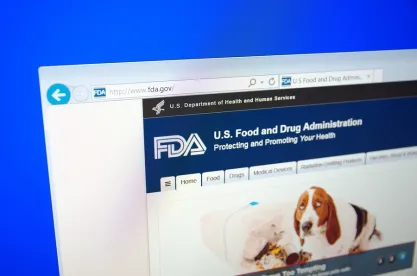The FDA recently issued a draft guidance titled “Deciding When to Submit a 510(k) for a Change to an Existing Device.” At the same time, the FDA issued a similarly titled draft guidance addressing how to decide when to file a 510(k) for modifications to the software of existing devices.
Regular readers of these Alerts may recall that in 2011 the FDA issued a draft guidance as an update to its 1997 guidance on the same topics. The 2011 version created such an uproar that, in the FDA Safety and Innovation Act, Congress ordered the FDA to withdraw it and start over. The FDA states that this latest iteration “preserves the basic format and content of the [1997] original [version], with updates to add clarity.”
Modifications to Existing Devices
The draft guidance documents are intended to “aid manufacturers of medical devices subject to premarket notification requirements who intend to modify a 510(k)-cleared device or a pre-amendments device subject to 510(k) (also referred to together as “existing devices”) during the process of deciding whether the modification exceeds the regulatory threshold of 21 CFR 807.81(a)(3) for submission and clearance of a new 510(k).”
The draft guidance on modifications to existing devices spans 73 pages and regulatory professionals at device companies will need to become intimately familiar with most, if not all, of it. The gist, however, is presented in the following five flowcharts from the FDA draft guidance:
Figure 1 – Main Flowchart
Figure 2 – Flowchart A
Figure 3 - Flowchart B
Figure 4 - Flowchart C
Figure 5 - Flowchart D
Note that the charts interrelate to a certain extent; i.e., they are not stand-alone charts. A copy of the draft guidance, containing the full-size charts, can be found here.
When Modifications to Software Require a New 510(k)
The draft guidance issued on software changes defines “software” as “the set of electronic instructions used to control the actions or output of a medical device, to provide input to or output from a medical device, or to provide the actions of a medical device.” The draft guidance spans 32 pages, but the heart of it is presented in the following flow chart:

For example, the chart shows that if a change is made solely to strengthen cybersecurity, the manufacturer has to document the reasons for its decision but does not have to file a new 510(k). Conversely, if the software is modified and introduces a new cause of a hazardous situation that could result in significant harm and this is not effectively mitigated by the most recently cleared device, then the manufacturer must file a new 510(k).
A copy of the draft guidance on software changes can be found here.



 />i
/>i






